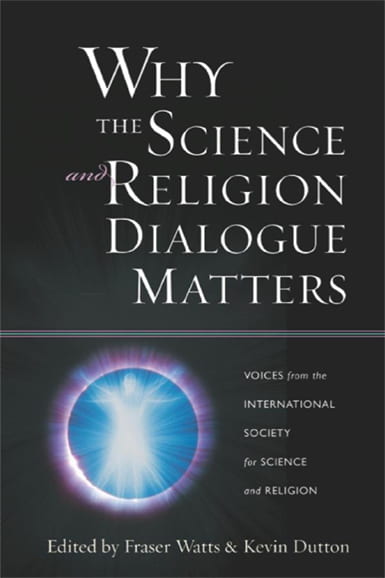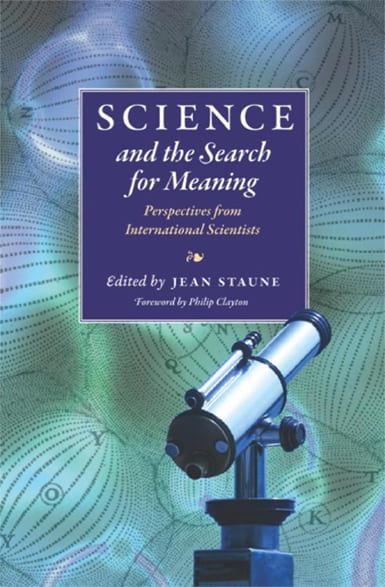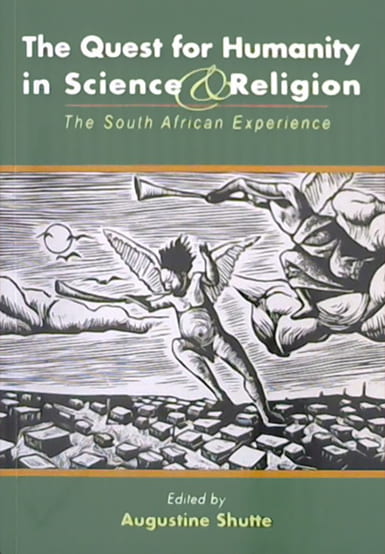In Review
A Complex, Brighter Horizon
New horizons for science and religion.
By Philip Clayton
In June 1998, when 23 Jewish, Christian, and Muslim scientists gathered at the University of California, Berkeley, to talk on the topic “Science and the Spiritual Quest,” the conference garnered 100 million media impressions, including the cover of Newsweek. Today, almost nine years later, the mere existence of science and religion dialogue is no longer newsworthy. In the American context at least, conferences and publications have since extended the dialogue into almost every subfield of science and virtually every domain of Christian theology. The whole spectrum of Christianity, from very conservative to very liberal, can now point to its own authors and success stories.
The frontiers of the dialogue are shifting elsewhere and, for more liberal scholars at least, a new set of tasks now demand attention. Can we formulate cogent answers to the really complex ethical issues raised by science, such as when and where (not whether!) to use stem-cell technologies in medical interventions? Can we trace the shifting power plays in the new political alliances of scientific theories and religious groups, recognizing how they are altering the landscape of American religious life—sometimes radically and, one presumes, permanently? In what ways might naturalism function as an ally rather than as a dangerous opponent to all things religious, the “universal acid” that will eat through everything of value in human existence?
The most rapid, and perhaps the most significant, changes are now taking place outside the United States. They are arising as other religious traditions begin to study the history of their own interactions with science and to formulate their own, often very different, agendas for the future. Three collections, all published within the last six months (two of them, interestingly, by the much-maligned Templeton Foundation), signal the new trends; together, they begin to put a face on the future of the dialogue in an era when American and Christian interests are no longer dominant.
At the center of Why the Science and Religion Dialogue Matters lie contributions from Jewish, Muslim, Hindu, Buddhist, and Asian Christian scholars. Here, worlds of possibility largely ignored in standard religion-science studies come into view. Trinh Xuan Thuan, a Vietnamese astrophysicist, paints a picture of natural links between contemporary science and Buddhist philosophy and practice. “Science isn’t Buddhism’s main preoccupation,” he notes, and yet “it has long been asking questions that are astonishingly similar to those that preoccupy modern science.” Is the world built up out of distinct, indivisible particles? Do appearances reflect some solid reality beneath them? What is the relationship between the animate and inanimate, between subject and object?

Why the Science and Religion Dialogue Matters
Likewise, although Buddhist practice and scientific procedures may look very different at first glance, “a closer look reveals that Buddhism, just like science, relies also on the experimental method to find out about reality.” An initial examination of the parallels leads Trinh to (re-)describe Buddhism as a “contemplative science” or a “science of the mind.” Within this Buddhist perspective there are no struggles to integrate naturalistic assumptions with the existence of God, no worries about divine action, and no pressing reinterpretations of discordant scriptural texts. Instead, one is struck by a sort of joyous spirit of exploration as Trinh rereads classic Buddhist doctrines from the standpoint of contemporary physics, finding “harmonious complementarity” in unexpected places.
A similar “synergy of science and spirituality” is visible in Indian religious history. “Religion” is not a negatively laden term for Hindus, B. V. Subbarayappa argues, for it involves “fostering values of life like love, compassion, truthfulness, nonviolence, non-possession, and human fellowship.” Science can easily be combined with “the pursuit of spirituality toward an experience of undifferentiated concordance with the macrocosm.” Yet Hindu scholars are not interested in harmony at any price; the religious standpoint also requires harsh criticism of the use of science and its resulting technologies. Subbarayappa concludes, “With its own limitations, methodological as well as operational, science needs a spirituality that permeates human thoughts and practices, that meets the innermost needs of human spirit.”
Most of the papers collected by Jean Staune in Science and the Search for Meaning were originally presented during a major “Science and the Spiritual Quest” conference at UNESCO headquarters in Paris. And cultural location matters. A more secular, more subtle (read: more French) context permeates this volume; I like to imagine the conversations taking place over espresso at a favorite Left Bank café. Here, science is taken for granted, and the authors puzzle instead over the fact that religious belief continues to exist at all. One can’t help but notice the contrasts between this more tentative approach and a very different undertone that permeates many American religion-science publications, one that seems to say, “our religious beliefs are obviously true, it’s the naturalism and ‘secular humanism’ of science that represent the real problem in this field.”

Science and the Search for Meaning
Three examples will have to suffice. Paul Davies plays the role of iconoclast, summarily dispatching most of the standard Anglo-American views on God and physics: “The idea of a God who is just another force or agency at work in nature, moving atoms here and there in competition with physical forces, is profoundly uninspiring.” His is a deeper, though more intangible, quest: “Why a set of laws that drives the searing featureless gasses coughed out of the big bang toward life and consciousness and intelligence and cultural activities such as religion, art, mathematics, and science?”
Is Davies asking a metaphysical question, in the classic sense of the term? Yes and no. His approach invites the fullest possible scientific investigation of religion, its cultural origins and evolutionary functions, and it doesn’t draw back from conclusions that many will find uncomfortable. And yet it holds a space open for something more. “The emergence of life and consciousness,” Davies maintains, “are written into the laws of the universe in a very basic way.”
Christian de Duve, one of the four Nobelists in this volume, works to show how wrong-headed are the arguments of the “intelligent design” (ID) theorists Michael Behe and William Dembski. Like the ID theorists, de Duve continues to speak of a religious dimension, though he conceives it not in terms of doctrines but as an elusive “something else.” But the parallel ends there. ID strives to save a place for religion by specifying what science can never explain, whereas religion for de Duve is bound up with the mystery-cum-scientific fact that “we belong to a universe capable of giving rise to life and mind.” This subtle yet undeniable mystery is enhanced rather than undercut by science’s steady progress in understanding the origins and evolution of life. The more one understands, the deeper the mystery becomes.
In perhaps the most profound essay, the great French physicist Bernard d’Espagnat blends quantum field theory and philosophical speculation in the spirit of Spinoza. On his reading, quantum mechanics detects and measures properties that are manifestations of a deeper and perhaps intrinsically unknowable reality, which he speaks of as the “veiled reality.” We have no reason to construe that deeper reality as physical rather than mental; after all, the world of our experience manifests both physical and mental properties. Given the “undeniable obscurity” of the questions, d’Espagnat claims for his affirmation of meaning little more than conceptual possibility: “It is natural to consider that [this veiled reality] has a (timeless) attribute of which our capacity to desire, and our quest of the good, are a dim reflection.”

The Quest for Humanity in Science and Religion
Finally, The Quest for Humanity in Science and Religion turns to the politics of South Africa as the interpretive lens for viewing religion-science dialogue. The quest to reconcile (European) science with (indigenous) religious traditions is analogous to the ongoing struggle for African-European reconciliation after apartheid: “Africa … has to assimilate the scientific worldview in order to find ways of making humane use of the technology that comes with it. And Europe … has to be prepared to learn something from Africa, something essential that it seems to have forgotten.”
What results is a religion-science dialogue unlike anything the North has produced. Core terms from multiple African tribal traditions, translated and analyzed in their particular contexts of origin, open windows onto radically different modes of being in the world. In place of the northern separations—of God from world, of black from white, of individual from society—this volume advances and elaborates an ethics and politics of wholeness. “Umuntu ngumuntu ngabantu,” the traditional Zulu saying goes: “a person is a person through other persons.”
What, then, has the northern dialogue omitted? The answer, these African authors suggest, is simple: ourselves. Religion-science dialogue is less about theory than it is about culture, less about abstract issues than about learning to create “a unity of common life” in the midst of diversity: “Both science and religion are the product, the creation, of humanity. Getting a proper understanding of them and how they ought to be related will therefore involve acquiring a certain kind of knowledge of oneself, of what it is in human beings that causes and enables us to do this.”
These three volumes, I suggest, are precursors of the next stage of science-religion dialogue. I don’t mean to affirm that there is nothing of value in the more “mainline” discussions of science and religion. Those discussions remain personally and politically important for religious people in Europe and North America. Scientific developments continue to transform liberal theology and ethics, and the new dialogue holds great transformative potential for more conservative religious groups as well. My plea instead is against a certain myopia that would pretend that the specialized Christian theological discussions are the only face of science and religion. At this time, a rapid internationalization of the field is taking place, with dramatic and mostly unacknowledged results. We ignore the conceptual and valuational resources of these new forms of dialogue at our peril.
Michael Heller notes in Science and the Search for Meaning that the really interesting intersections between science and religion are the domain of existence, the domain of ultimate rationality, and the domain of meaning and value. These questions don’t live far away “beyond the limits.” Instead, “the concreteness of existence, the rationality of the laws of nature, the meaning touched by us when we make our decisions are present in every atom, in every quantum of energy, in every living cell, in every fiber of our brain.”
“It is true,” Heller concludes, “that the Mystery is not in the theorems of science but in its horizon. Yet this horizon permeates everything.”
Philip Clayton, Visiting Professor of Science and Religion at HDS for 2006–07, is the Ingraham Professor at the Claremont School of Theology and Professor of Philosophy and Religion at the Claremont Graduate University. He is the author or editor of many books, including the recently published Oxford Handbook of Religion and Science, and won the first annual Templeton Research Prize in 1999.
Please follow our Commentary Guidelines when engaging in discussion on this site.

